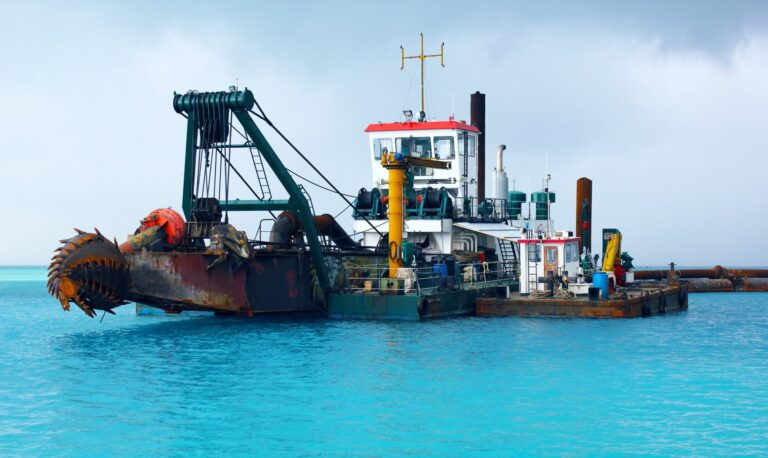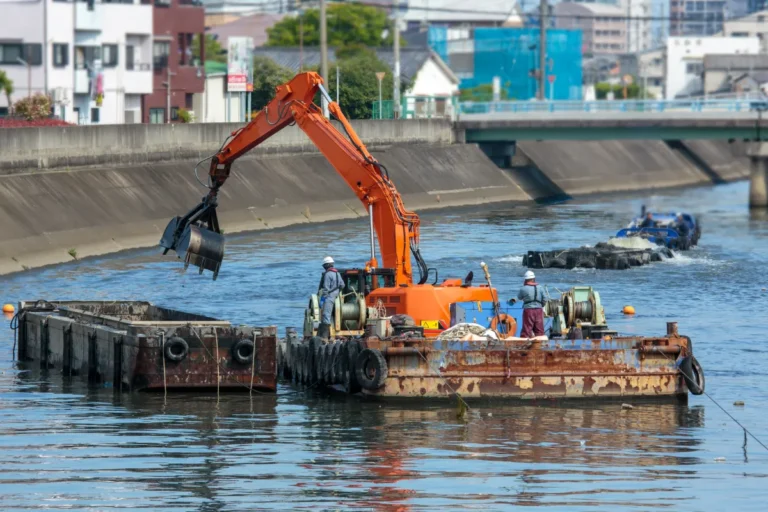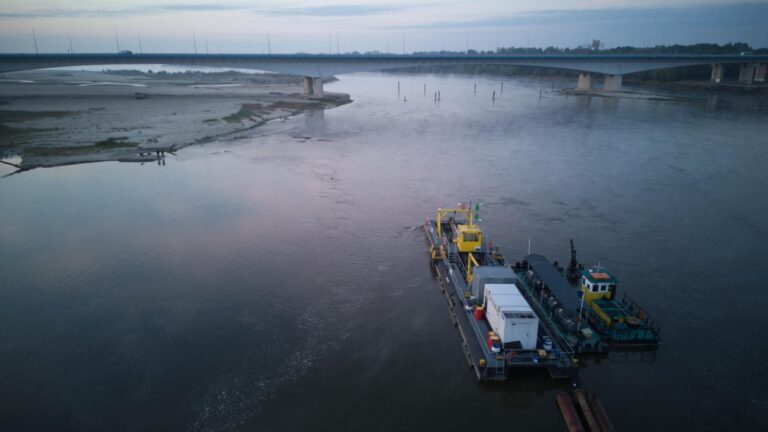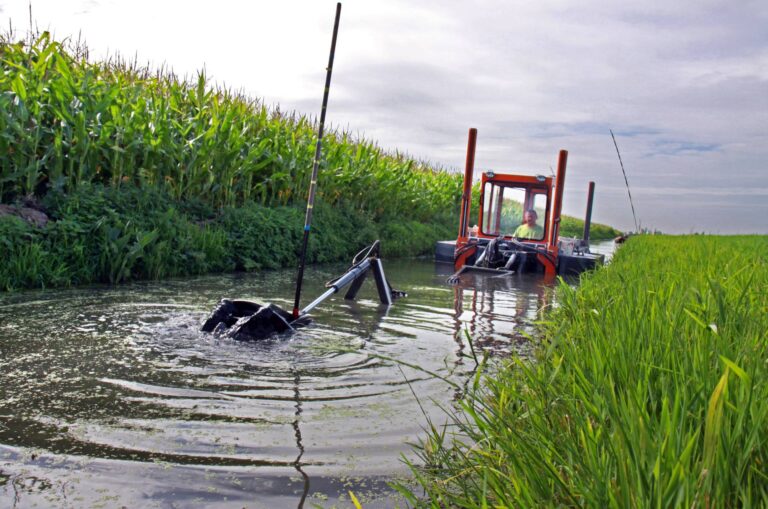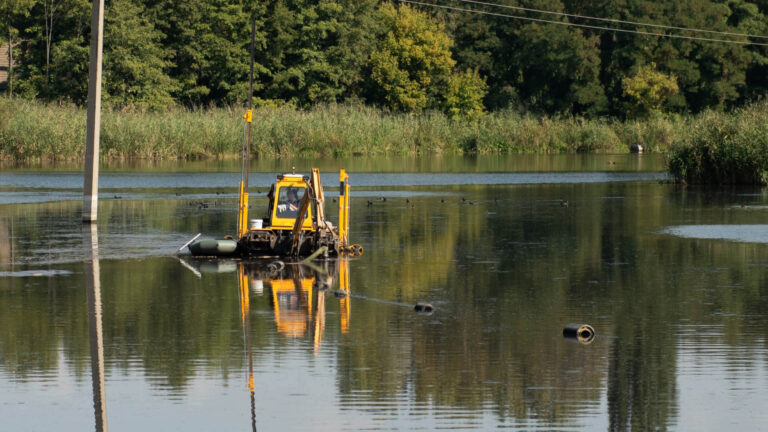Lagoon dredging plays a vital role in restoring water quality and maintaining the delicate balance of ecosystems. Over time, lagoons, which are shallow bodies of water separated from larger water sources, often accumulate sediment, organic matter, and pollutants. This buildup can lead to reduced water depth, poor water quality, and an overall decline in biodiversity. As critical habitats for aquatic plants, fish, and wildlife, lagoons are essential for environmental health and biodiversity. However, when sedimentation and pollution take over, the need to dredge for lagoon restoration becomes inevitable.
Lagoon dredging involves removing sediments and contaminants, allowing water bodies to return to their natural state, and supporting ecological balance. Industrial waterbody dredging, in particular, addresses the large-scale challenges faced by lagoons used in agriculture, wastewater treatment, and aquaculture. This blog will explore the significance of waterbody dredging in ecosystem rehabilitation and water quality maintenance, highlighting its importance as a tool for sustaining environmental and industrial health.
What is Lagoon Dredging?
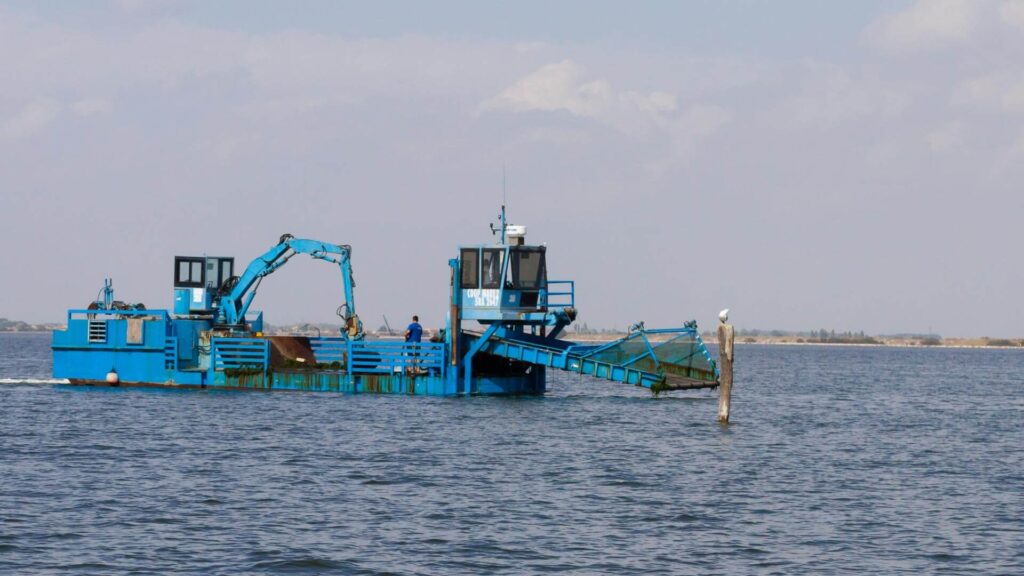
Definition and Process
Lagoon dredging is the process of removing sediment, sludge, and debris from the bottom of lagoons to restore their natural depth, improve water quality, and promote ecosystem balance. Over time, lagoons accumulate excess organic matter, pollutants, and sediment that can compromise their health and usability. This process is essential for lagoons used in agriculture, wastewater treatment, and aquaculture, as sediment buildup can disrupt operations and degrade water quality. Unlike other forms of dredging, such as riverbed or harbor dredging, waterbody dredging focuses on shallow, enclosed water bodies and often requires precision to minimize environmental disturbance.
Tools and Techniques
Industrial lagoon dredging employs advanced equipment to handle the specific challenges of these environments. Hydraulic dredgers, cutter suction dredgers, and other specialized machinery are commonly used to dredge lagoons effectively. Hydraulic dredgers use water pressure to loosen and transport sediments, while cutter suction dredgers mechanically cut through compacted material. Precision dredging techniques ensure minimal harm to aquatic habitats while removing unwanted sediment.
Dredging is critical for lagoon restoration when sedimentation impacts water quality or ecosystem health. Industrial waterbody dredging revitalizes these essential water bodies and ensures their sustainability for environmental and industrial purposes. Proper tools and techniques make this process efficient and eco-friendly.
Importance of Lagoon Dredging
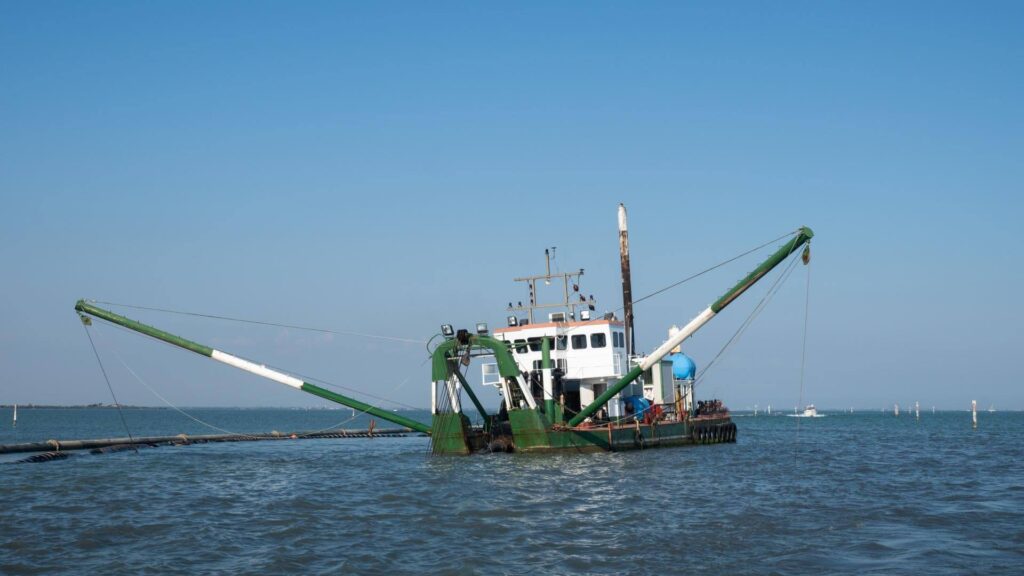
Improving Water Quality
Lagoon dredging plays a pivotal role in removing contaminants, excess nutrients, and harmful sediments that accumulate over time. These pollutants can lead to water quality issues such as increased turbidity, reduced oxygen levels, and harmful algae blooms. By eliminating the sediment buildup, lagoon dredging improves water clarity and oxygenation, creating healthier conditions for aquatic life. This directly enhances the sustainability of ecosystems, enabling fish, plants, and microorganisms to thrive in a balanced environment.
Restoring Ecosystem Balance
The buildup of sediments often fosters the overgrowth of invasive plants and algae, which can choke native habitats and disrupt ecological harmony. Industrial waterbody dredging addresses these issues by removing the excess organic matter and sediments that contribute to such growth. This process revitalizes habitats, creating more favorable conditions for native species and supporting biodiversity. Restoring balance to lagoon ecosystems is essential for preserving their ecological importance.
Flood Control and Navigation
Sediment accumulation reduces lagoon capacity, increasing the risk of flooding during heavy rains or storms. Lagoon dredging prevents this by maintaining the water body’s depth and storage capacity. Moreover, dredging ensures navigability for recreational and commercial activities, particularly in lagoons used for transportation or aquaculture. Thus, industrial waterbody dredging is vital for mitigating flood risks and maintaining the usability of these important water systems.
Signs That a Lagoon Needs Dredging
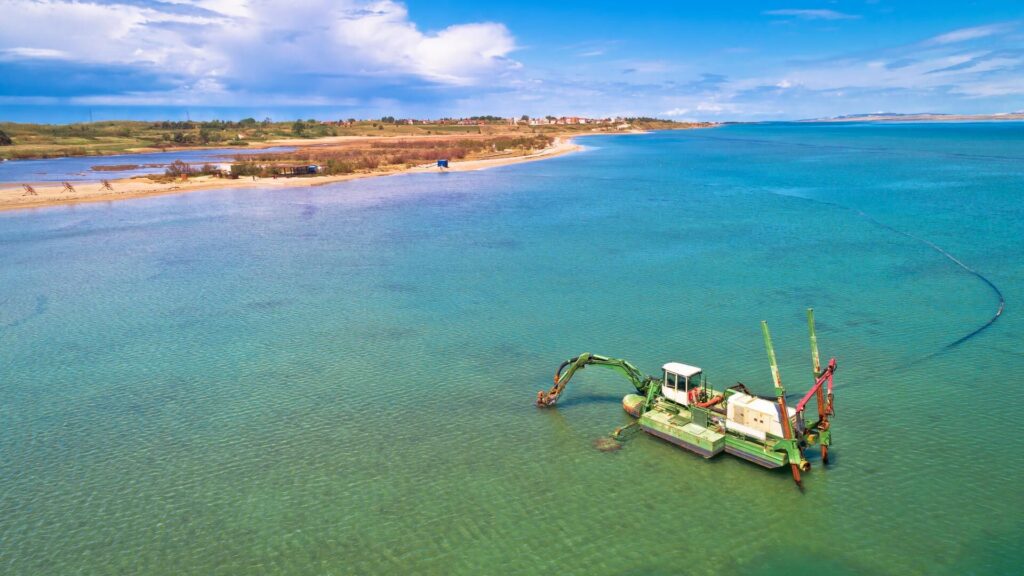
Visible Indicators
One of the most common signs that lagoon dredging is necessary is the presence of excessive algae blooms. These blooms are often caused by nutrient-rich sediments accumulating at the bottom of the lagoon, creating an ideal environment for invasive plant growth. Other visible indicators include murky water and foul odors, both of which are caused by organic matter decomposition and stagnant conditions. Additionally, reduced water depth and capacity are clear signs that sedimentation has taken over, impairing the lagoon’s functionality and aesthetics. When these indicators are present, it becomes crucial to dredge for lagoon restoration to prevent further degradation.
Environmental Impact Signs
A declining population of aquatic life and reduced biodiversity are significant warning signs that a lagoon is suffering from sediment overload. Poor water flow and the accumulation of toxic materials can create oxygen-deprived zones, making it impossible for fish and other organisms to survive. In these cases, waterbody dredging is essential to remove harmful sediments, restore water flow, and rehabilitate the ecosystem. Healthy lagoons are critical for maintaining biodiversity, and dredging ensures they remain viable habitats.
Industrial Implications
Sediment buildup can severely impact operational efficiency for facilities relying on lagoons for wastewater treatment. Over time, untreated sludge and sediment can clog systems and reduce the lagoon’s capacity to treat wastewater. Industrial waterbody dredging addresses these challenges by removing accumulated debris and ensuring compliance with environmental standards. Regularly assessing sediment levels and knowing when to dredge for lagoon maintenance can save facilities from costly repairs and environmental fines. Therefore, lagoon dredging is not only an environmental necessity but also a practical solution for maintaining industrial operations.
Industrial Lagoon Dredging: Techniques and Applications
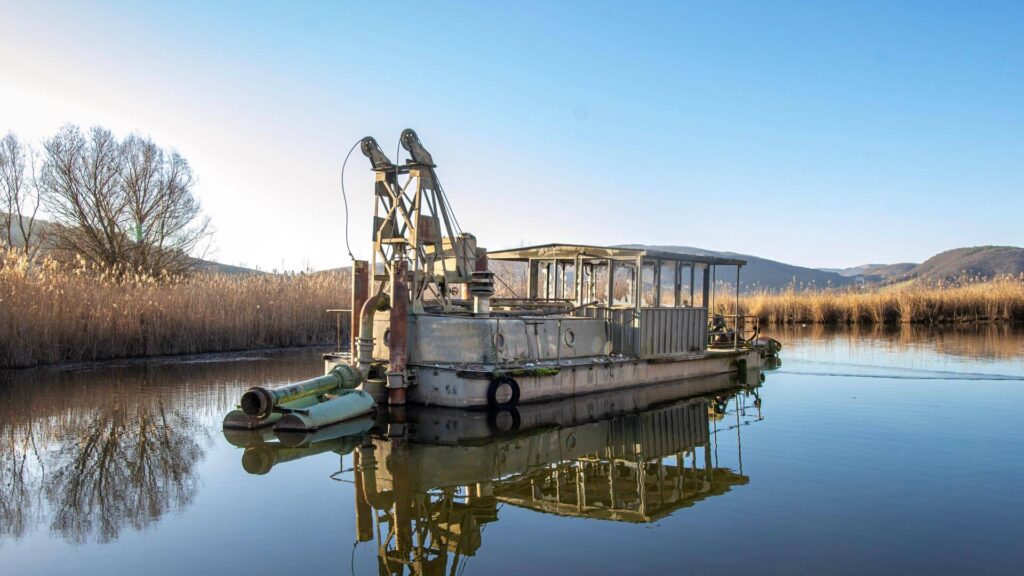
Industrial Applications of Lagoon Dredging
Lagoon dredging is critical in various industrial applications, particularly for maintaining the functionality and environmental compliance of wastewater treatment systems. Over time, wastewater treatment lagoons often accumulate sludge, which can compromise their efficiency and lead to regulatory violations. By removing this sludge, waterbody dredging ensures that these systems operate effectively while meeting environmental standards.
Similarly, agricultural, aquaculture and industrial lagoons are prone to sedimentation and contamination caused by runoff and organic matter. Industrial lagoon dredging in these settings helps prevent the buildup of harmful materials, protects water quality, and supports agricultural irrigation, aquaculture production, or industrial processes. Maintaining sediment-free lagoons is essential for sustaining industrial operations and ensuring environmental sustainability.
Advanced Techniques for Effective Dredging
Modern advancements in industrial lagoon dredging focus on minimizing environmental impact while maximizing efficiency. Precision dredging technologies, such as GPS-guided dredgers and remote-operated equipment, allow operators to target sediment removal accurately, preserving surrounding ecosystems. These advanced techniques are particularly valuable for projects that aim to dredge lagoons with minimal disruption to aquatic habitats.
Innovative sludge dewatering and disposal methods also play a key role in industrial lagoon dredging. These methods allow for the efficient handling of dredged material, reducing waste and supporting its potential reuse in construction or agriculture. By combining precision tools and sustainable practices, lagoon dredging becomes a highly effective solution for maintaining industrial lagoons while protecting the environment. Industrial waterbody dredging remains indispensable for industries that rely on lagoons for their operations and environmental compliance.
Benefits of Lagoon Dredging
Environmental Benefits
Lagoon dredging provides significant environmental benefits by improving water quality and reducing pollutants that accumulate over time. Excess nutrients, organic matter, and harmful sediments are effectively removed, restoring the lagoon’s natural clarity and oxygen levels. This revitalization creates a healthier environment for aquatic life, supporting the restoration of ecosystems and enhancing biodiversity. By addressing sedimentation and invasive plant overgrowth, waterbody dredging ensures that these ecosystems remain balanced and thriving. When industries and communities dredge for lagoons in an environmentally responsible manner, they contribute to the preservation of vital habitats and water resources.
Economic Advantages
From an economic perspective, lagoon dredging offers considerable cost savings when performed as part of regular maintenance. Allowing sediment to build up unchecked can lead to costly rehabilitation projects, whereas periodic dredging ensures the lagoon remains functional and efficient. Industries such as fisheries, tourism, and navigation also benefit from properly maintained lagoons, as these water bodies often serve as key resources for their operations. Industrial waterbody dredging, in particular, helps ensure that wastewater treatment systems and aquaculture facilities remain productive and compliant with regulations, avoiding potential fines or shutdowns.
Long-Term Sustainability
The long-term benefits of lagoon dredging include promoting a balanced ecosystem that future generations can enjoy. By maintaining the depth and water quality of lagoons, communities can ensure these resources remain viable for both ecological and industrial purposes. Furthermore, waterbody dredging plays a critical role in meeting environmental regulations and standards, making it a cornerstone of sustainable water resource management. Whether for environmental restoration or industrial use, the decision to dredge for lagoon maintenance is a proactive step toward protecting both natural and economic assets.
Challenges in Lagoon Dredging
Environmental Concerns
While lagoon dredging offers numerous benefits, it also presents certain environmental challenges. One of the primary concerns is the potential disruption of ecosystems during the dredging process. Aquatic habitats can be temporarily disturbed, which may impact native species and their breeding cycles. It is essential to plan dredging activities carefully to minimize such disruptions and ensure long-term environmental restoration.
Another challenge is the disposal of dredged material. Sediments removed during lagoon dredging can contain contaminants, organic waste, or invasive species, requiring proper handling and disposal. This step is critical to prevent further environmental damage or pollution. Responsible practices are necessary when communities and industries decide to dredge for lagoon maintenance, ensuring that the process benefits rather than harms the ecosystem.
Technical and Financial Barriers
The financial costs of lagoon dredging can be significant, especially for large-scale projects. Industrial waterbody dredging requires advanced equipment, such as cutter suction dredgers or hydraulic dredgers, which can be expensive to procure and operate. Additionally, skilled personnel are needed to ensure the work is done efficiently and safely. These technical and financial requirements can make lagoon dredging inaccessible for some communities or industries without adequate resources.
Despite these challenges, waterbody dredging often has long-term benefits that outweigh the costs. Proper planning, modern technology, and eco-friendly practices ensure that dredging operations meet environmental standards and deliver sustainable results. Addressing these challenges is key to the success of any lagoon dredging project, whether for environmental preservation or industrial purposes.
Future Trends in Lagoon Dredging
Emerging Technologies
Advancements in technology are shaping the future of industrial lagoon dredging by improving efficiency and reducing environmental impact. Automation and artificial intelligence (AI) are increasingly being integrated into industrial lagoon dredging operations. AI-powered systems can optimize sediment removal, monitor environmental conditions, and predict potential impacts, making the dredging process more precise and less invasive. Automation reduces the need for manual labor and enhances safety, especially in challenging or hazardous environments. These innovations are revolutionizing how industries approach lagoon maintenance, ensuring minimal disruption to ecosystems.
Eco-friendly dredging equipment is also gaining traction, with a focus on reducing fuel consumption and emissions. Electric or hybrid dredgers are becoming viable options for industrial lagoon dredging, offering sustainable alternatives to traditional diesel-powered machinery. These advancements support environmentally conscious practices while maintaining high performance.
Focus on Sustainability
Sustainability is at the forefront of future waterbody dredging efforts. Innovations in sediment management, such as transforming dredged materials into reusable resources, are becoming more common. Sediment can be repurposed for construction, agriculture, or habitat restoration, reducing waste and creating additional value.
There is also a growing emphasis on minimizing environmental impacts through precise and strategic dredging techniques. Industrial lagoon dredging now incorporates methods to protect native species and habitats, ensuring ecological balance. As more industries and communities prioritize sustainability, the need to dredge lagoons in eco-friendly ways will continue to drive innovation in this field.
Conclusion
Lagoon dredging is an essential process for restoring water quality and maintaining ecosystem balance in these vital aquatic habitats. By removing harmful sediments, pollutants, and invasive growth, waterbody dredging enhances oxygen levels, supports biodiversity, and prevents issues such as flooding or contamination. For industrial applications, such as wastewater treatment and aquaculture, industrial lagoon dredging ensures operational efficiency and compliance with environmental standards.
Investing in regular dredging not only avoids costly rehabilitation efforts but also ensures the long-term sustainability of lagoons for both environmental and industrial purposes. Communities and industries must recognize the importance of this practice and take proactive steps to dredge for lagoon maintenance when signs of sediment buildup emerge.
In conclusion, waterbody dredging is a critical tool for preserving ecosystems, supporting economic activities, and safeguarding natural resources. Regular maintenance and eco-friendly practices will ensure these valuable water bodies thrive for generations to come.


